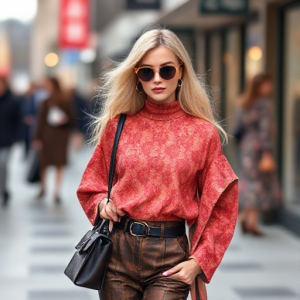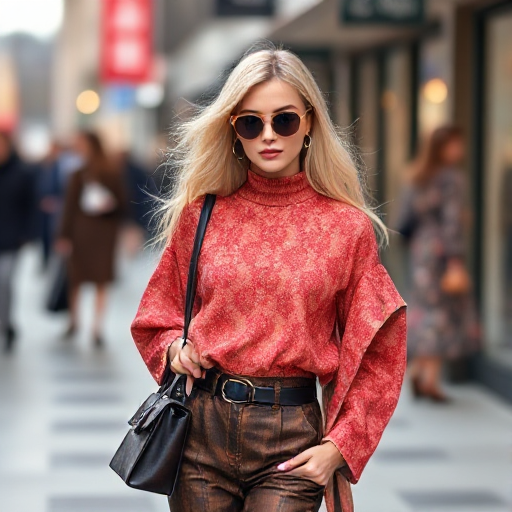
The fashion industry is an ever-evolving world, where trends shift rapidly, and businesses must keep pace. Over the years, the global fashion market has grown to become one of the most lucrative sectors, with countless opportunities for designers, influencers, retailers, and entrepreneurs to monetize fashion trends. Understanding how to tap into these trends and profit from them requires a combination of creativity, strategic planning, and an awareness of shifting consumer behavior.
Understanding Fashion Trends
Fashion trends refer to the popular styles, designs, and clothing items that gain widespread attention and become highly sought after for a period. These trends are influenced by various factors, including culture, celebrity endorsements, social media, seasonality, technological innovations, and environmental awareness. Fashion trends are categorized into two types: macro and micro trends.
- Macro trends: These are long-lasting shifts in style that can span years, such as the move towards sustainable fashion or the rise of athleisure wear.
- Micro trends: These are short-lived trends, often emerging in response to current events or influencer activity, such as specific colors, accessories, or garments that dominate the fashion landscape for a season or even just a few months.
How to Monetize Fashion Trends
Monetizing fashion trends involves capitalizing on the demand for trendy styles and creating value for both the consumer and the brand. Here are some key strategies:
1. Predict and Spot Emerging Trends Early
The first step in monetizing fashion trends is identifying them early. This requires constant research into fashion forecasting, attending fashion shows, and keeping an eye on influencers, celebrities, and social media platforms. Tools like Trendalytics and WGSN offer data-driven insights into emerging styles, fabrics, and color palettes. An early adopter who correctly predicts the next big trend can create products and marketing campaigns that position them as a trendsetter, giving them an edge over competitors.
2. Collaborations with Influencers and Celebrities
In today’s fashion landscape, influencers and celebrities are some of the most powerful drivers of trends. Collaborating with these individuals can bring significant attention and legitimacy to a brand or product. Brand partnerships have become increasingly popular in fashion, with influencers often designing limited-edition collections or promoting products to their large, dedicated following. For instance, collaborations like Kylie Jenner’s fashion line or H&M’s partnerships with top designers have generated massive profits and widespread appeal.
Influencers can monetize trends through affiliate marketing, where they earn a commission for every sale made through a unique link they share. Brands can also leverage influencers to create exclusive content, offer giveaways, and run promotions, thereby driving traffic and sales.
3. Fast Fashion and Limited Editions
Fast fashion is a business model built around quickly producing and distributing trendy items at affordable prices. Brands like Zara, H&M, and Shein have mastered this approach by rapidly reacting to emerging trends and getting them onto store shelves (or online stores) in record time. This model benefits from the immediacy of trends, ensuring that consumers can purchase what’s currently popular without waiting for long lead times.
Alternatively, brands can opt for limited-edition releases, which can create a sense of urgency and exclusivity. When a product is marketed as limited or time-sensitive, demand often increases. This strategy is effective in creating a sense of scarcity and excitement among consumers, pushing them to buy before the item sells out.
4. Creating Trend-Driven Content
In the digital age, content creation has become an essential part of monetizing fashion trends. Fashion brands can use social media platforms like Instagram, TikTok, and YouTube to showcase their latest collections, highlight trendy pieces, and engage with their audience.
Creating shareable content around fashion trends can help drive viral campaigns. For example, YouTube and Instagram influencers often create styling videos showing how to wear specific pieces or putting together looks based on current trends. As consumers seek inspiration, brands can showcase their products in these content pieces, driving both brand awareness and sales.
Additionally, leveraging user-generated content can be a powerful tool. Encouraging customers to post their own photos wearing the brand’s items can serve as a testimonial to the trendiness of the products and encourage others to purchase.
5. Sustainable and Ethical Fashion
Consumers are increasingly concerned about sustainability and the ethics behind the brands they support. As trends evolve, so do values and expectations. Brands that incorporate sustainable fashion practices can capitalize on a growing market of eco-conscious shoppers. This involves using eco-friendly materials, promoting slow fashion principles, and supporting fair labor practices.
By positioning themselves as eco-friendly and transparent about their manufacturing processes, brands can connect with consumers who are eager to purchase fashion with a positive environmental or social impact. Ethical fashion brands often use storytelling to connect with customers, emphasizing how their products are made and why they are better for the planet.
6. Fashion Subscription Boxes and Rentals
Subscription-based services and rental platforms are gaining traction as consumers seek convenience and variety in their wardrobe choices. Subscription boxes allow consumers to receive a curated selection of trendy fashion items tailored to their style preferences on a regular basis. Brands can monetize by offering monthly subscriptions or one-time boxes featuring seasonal trends.
Fashion rental services allow consumers to rent high-end, trendy pieces for special occasions, without committing to purchasing items that may only be worn once. This business model has gained popularity among consumers looking for ways to wear luxury or limited-edition items while staying budget-conscious. It’s also an eco-friendly option that taps into the trend of sharing economy models.
7. Data Analytics and Personalized Marketing
Utilizing data analytics is crucial in understanding consumer behavior and fashion trends. Brands can use data-driven insights to create personalized shopping experiences for customers. Platforms like Shopify and BigCommerce offer advanced tools for tracking sales trends, customer preferences, and inventory levels.
By analyzing this data, brands can ensure they stock the right products at the right time and tailor marketing efforts to consumers who are most likely to be interested in trendy items. Personalized email marketing, targeted ads, and loyalty programs can further drive sales by keeping customers engaged and offering them exclusive access to new collections or promotions.
Challenges in Monetizing Fashion Trends
While the potential for profit is significant, there are challenges to monetizing fashion trends. These include:
- Saturation of the market: As more brands adopt fast fashion strategies, competition increases, making it harder to stand out.
- Consumer fatigue: Constantly changing trends can lead to consumer fatigue and dissatisfaction, especially when the quality of products is compromised in the name of speed.
- Sustainability concerns: The fast fashion industry has been criticized for its negative impact on the environment, and brands that fail to adopt more sustainable practices risk alienating a growing market of eco-conscious consumers.
- Changing tastes: Fashion trends are highly volatile, and the rapid pace at which they change can make it difficult for brands to keep up and maintain consistent demand.
Monetizing fashion trends is an exciting but challenging endeavor that requires a combination of creativity, foresight, and strategic marketing. From predicting trends early and collaborating with influencers to creating engaging content and embracing sustainability, there are numerous avenues for turning style into profit. By staying agile and connected to the ever-changing fashion landscape, brands can successfully navigate this dynamic industry and build lasting success.
